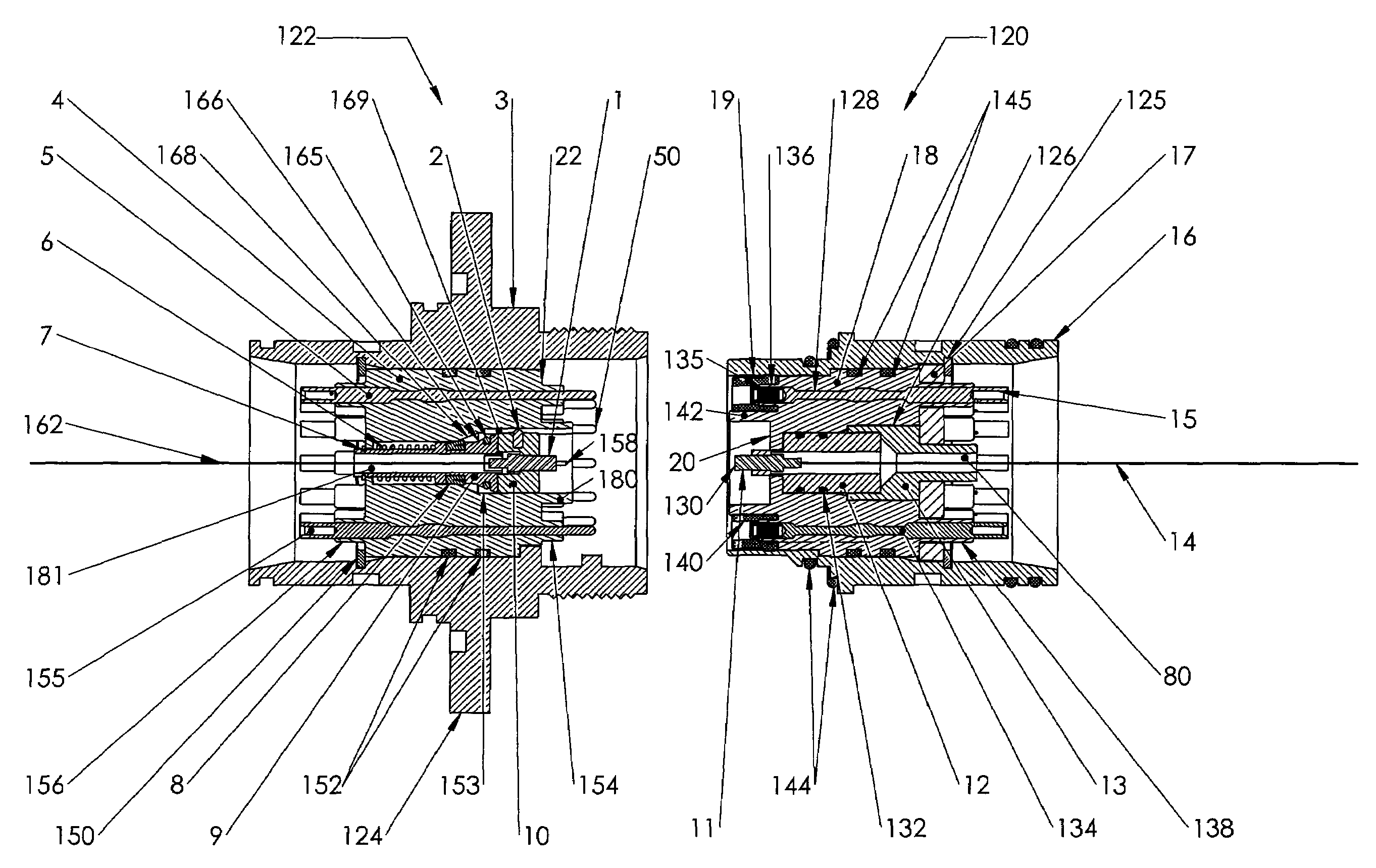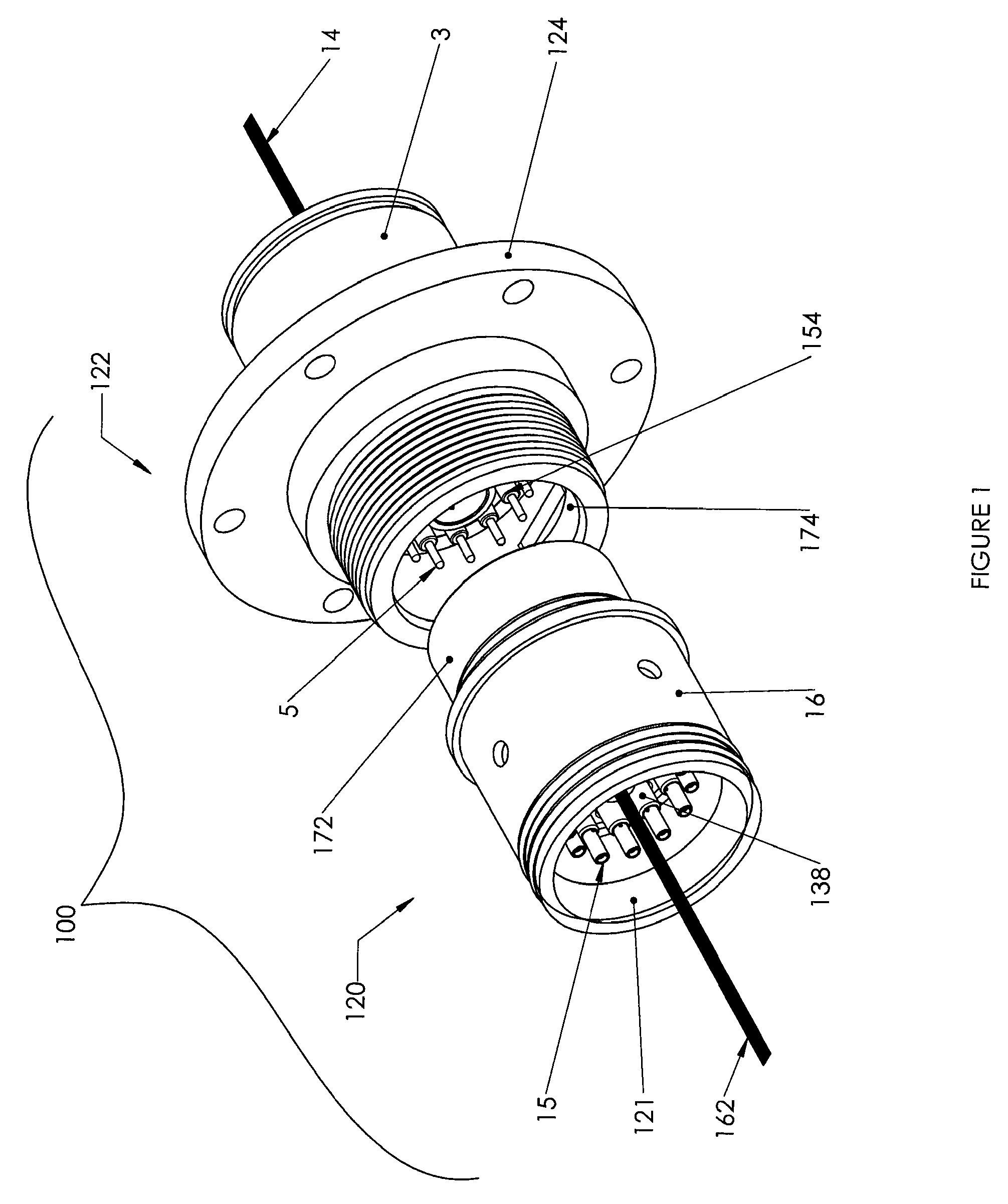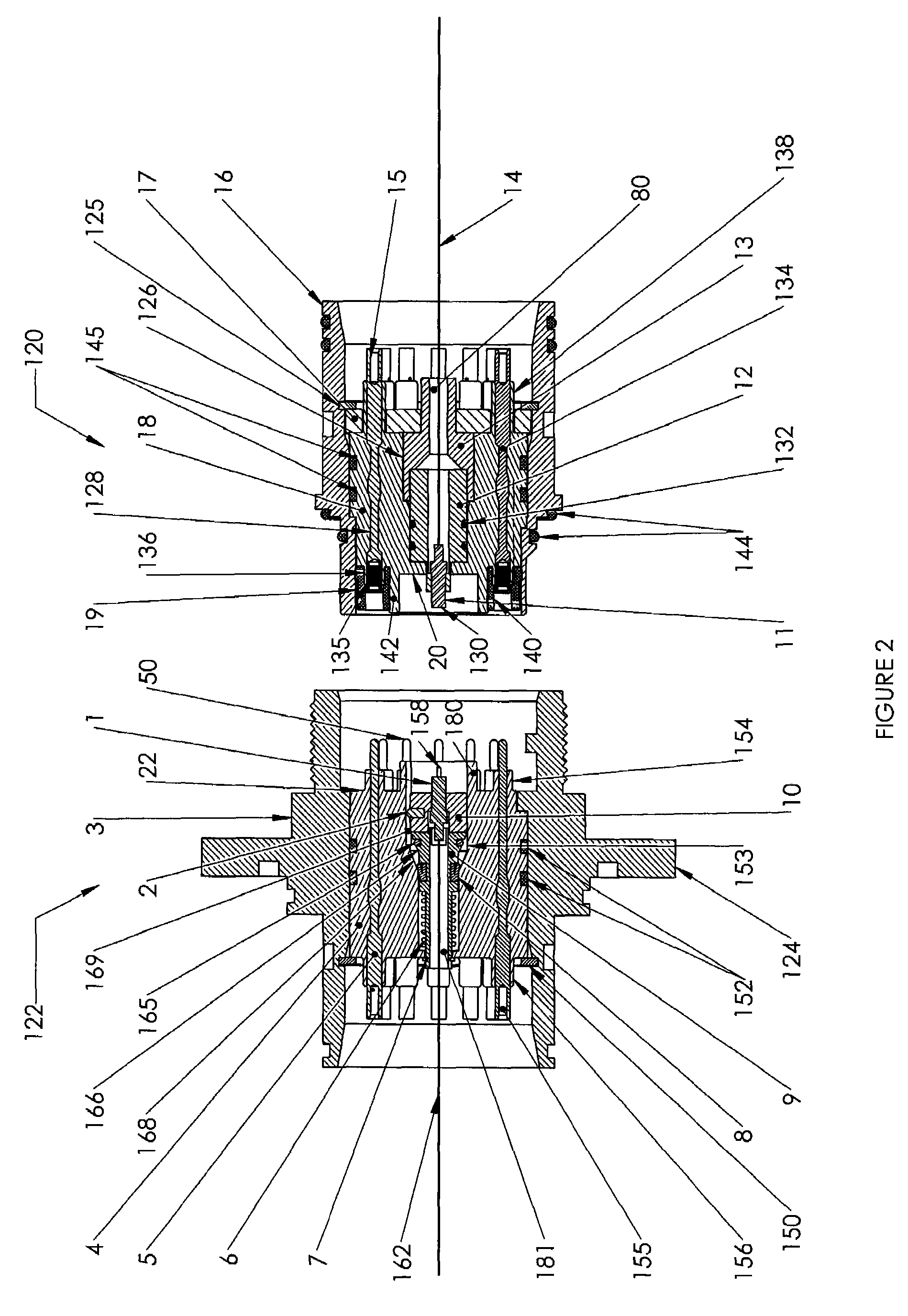Dry mate connector
a technology of connectors and mates, applied in the direction of coupling device connections, instruments, optical elements, etc., can solve the problems of connector failure, connector deformation, and connectors that are not suitable for high reliability applications, and achieve high manufacturing costs, improve reliability, and enhance the state of the art
- Summary
- Abstract
- Description
- Claims
- Application Information
AI Technical Summary
Benefits of technology
Problems solved by technology
Method used
Image
Examples
Embodiment Construction
[0026]Certain embodiments as disclosed herein provide for a dry-mate connector for simultaneously joining multiple electrical and / or optical circuits in a dry environment before immersing the connector in a harsh environment such as deep ocean depths.
[0027]After reading this description it will become apparent to one skilled in the art how to implement the invention in various alternative embodiments and alternative applications. However, although various embodiments of the present invention are described herein, it is understood that these embodiments are presented by way of example only, and not limitation. As such, this detailed description of various alternative embodiments should not be construed to limit the scope or breadth of the present invention as set forth in the appended claims.
[0028]FIGS. 1 to 4 illustrate a dry-mate hybrid or electro-optical connector 100 according to one embodiment, while FIGS. 5, 7, and 8 illustrate one part of the connector in more detail and FIGS....
PUM
 Login to View More
Login to View More Abstract
Description
Claims
Application Information
 Login to View More
Login to View More - R&D
- Intellectual Property
- Life Sciences
- Materials
- Tech Scout
- Unparalleled Data Quality
- Higher Quality Content
- 60% Fewer Hallucinations
Browse by: Latest US Patents, China's latest patents, Technical Efficacy Thesaurus, Application Domain, Technology Topic, Popular Technical Reports.
© 2025 PatSnap. All rights reserved.Legal|Privacy policy|Modern Slavery Act Transparency Statement|Sitemap|About US| Contact US: help@patsnap.com



